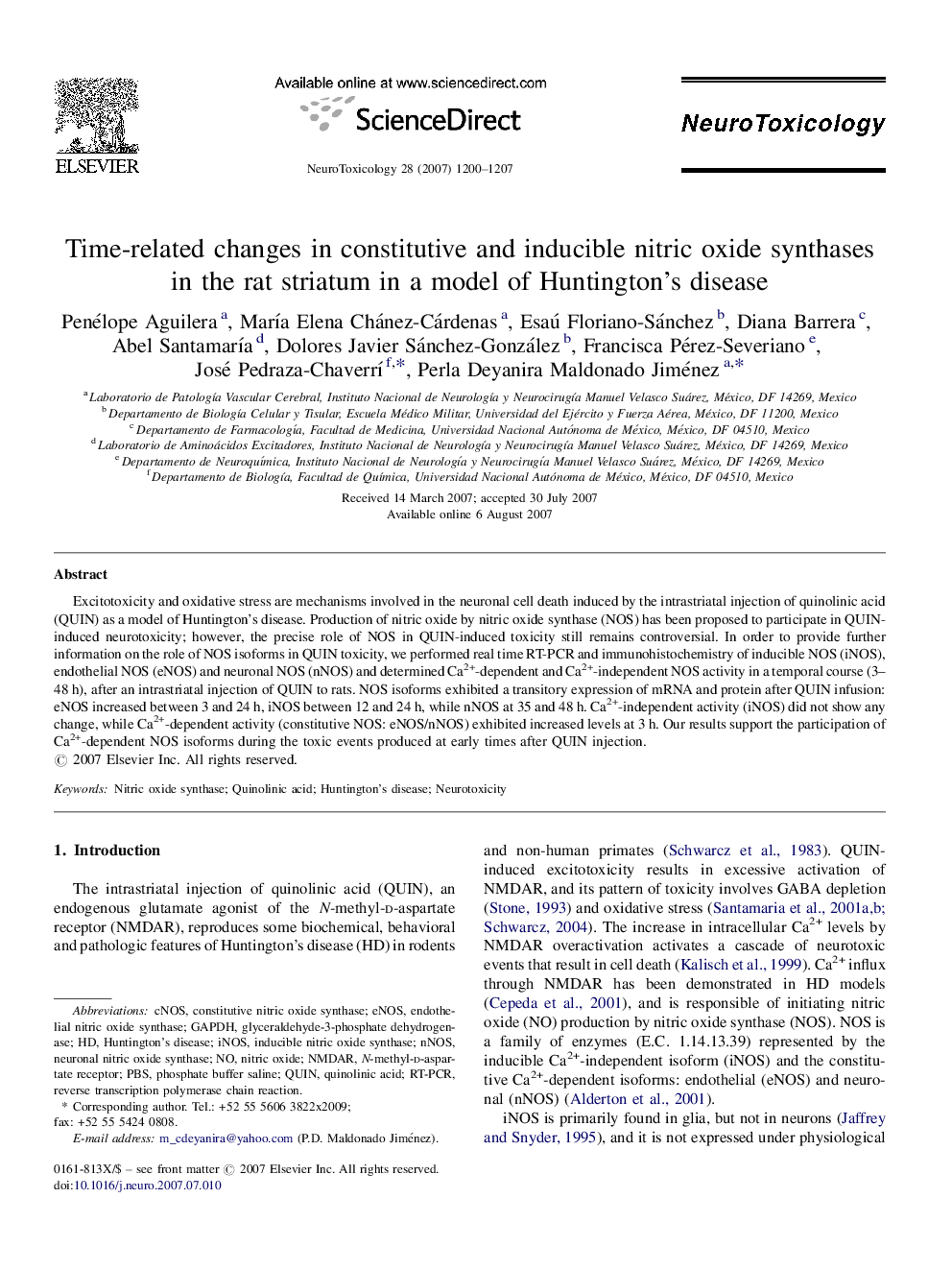| Article ID | Journal | Published Year | Pages | File Type |
|---|---|---|---|---|
| 2590377 | NeuroToxicology | 2007 | 8 Pages |
Excitotoxicity and oxidative stress are mechanisms involved in the neuronal cell death induced by the intrastriatal injection of quinolinic acid (QUIN) as a model of Huntington's disease. Production of nitric oxide by nitric oxide synthase (NOS) has been proposed to participate in QUIN-induced neurotoxicity; however, the precise role of NOS in QUIN-induced toxicity still remains controversial. In order to provide further information on the role of NOS isoforms in QUIN toxicity, we performed real time RT-PCR and immunohistochemistry of inducible NOS (iNOS), endothelial NOS (eNOS) and neuronal NOS (nNOS) and determined Ca2+-dependent and Ca2+-independent NOS activity in a temporal course (3–48 h), after an intrastriatal injection of QUIN to rats. NOS isoforms exhibited a transitory expression of mRNA and protein after QUIN infusion: eNOS increased between 3 and 24 h, iNOS between 12 and 24 h, while nNOS at 35 and 48 h. Ca2+-independent activity (iNOS) did not show any change, while Ca2+-dependent activity (constitutive NOS: eNOS/nNOS) exhibited increased levels at 3 h. Our results support the participation of Ca2+-dependent NOS isoforms during the toxic events produced at early times after QUIN injection.
